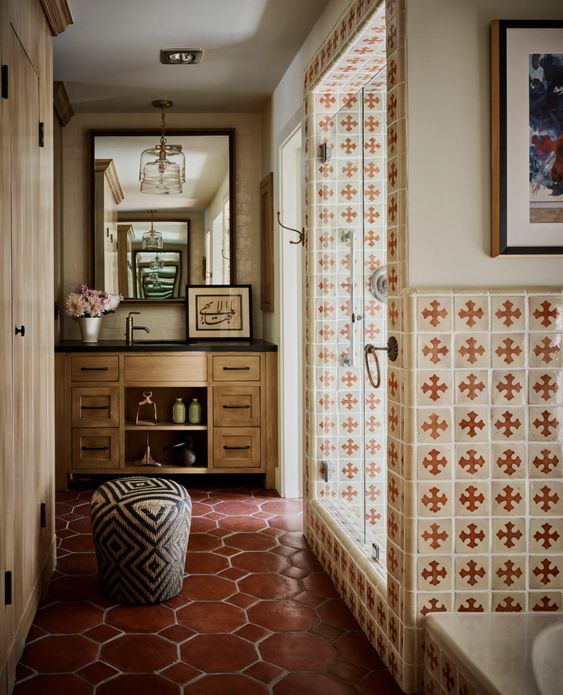Spanish culture and architecture have a lot of depth and continue to find relevance today despite changing trends. Spanish architecture is known for its Moorish influences, and rich textures. If you’re looking for some ideas on how to bring this iconic style into your home, this guide will show you everything from common materials used in Spanish design to photographs of real-life examples of Spanish interior design style.
Hallmarks of Spanish Style Architecture


Tile roofs: Tiled roofs were common in Spain, so you’ll see them on many buildings.
Wooden beams and stucco walls: Rustic beams made from wood are an important part of the look and feel of this style, as well as creamy stucco walls.
Arched windows: Arched windows are another hallmark of Spanish style architecture because they let in more light than straight windows would allow for a smaller space–and they’re also beautiful! You’ll see both round “Roman” arches and Moorish “horseshoe” arches used.
Wrought iron: Many Spanish-style buildings incorporate wrought iron railings or ornaments.
Origins of Spanish Architecture
Spanish architecture is a reflection of Spain’s multicultural history. The Moors brought their style of architecture to Spain in the 8th century, and they continued building in this style for several hundred years after their conquest by Christian forces. During this time, Spanish architects began incorporating elements from European styles into their designs, creating a fusion that remains evident today.
The two most popular styles are called Mudéjar and Renaissance Revival–and both are based on earlier traditions from other countries around Europe (which you’ll learn more about below).
Muslim Cultural influence on Spanish design
- Moorish tiles: The intricate patterns of these hand-painted ceramic tiles, which originated in Spain, are still popular today. They are often used as wall and floor coverings for both residential and commercial spaces.
- Moorish spires: These towers have become synonymous with Spanish churches, but they actually originated from Muslim architecture in Al-Andalus (the Arabic name given to southern Spain).
- Moorish arches: This distinctive style of arch has been used since ancient times and is seen in many famous Spanish landmarks
Where to see it today
Spanish style architecture remains popular in many places today beyond Spain. In the U.S., you’ll often see examples of Spanish homes across the West and Southwest, in areas historically settled by the Spanish.
The ‘California Casual‘ style that has been popularized by design influencers like Shea McGee and Amber Lewis is also heavily influenced by Spanish design, and in particular the light and spacious style of traditional haciendas.
Conclusion
In conclusion, we hope that this article has helped you to better understand Spanish interior design. We have looked at some of its most important features and how they can be used in your own home. If you want to add a little bit of Spanish flair to your home, we would love to help.
previous:
up next:

